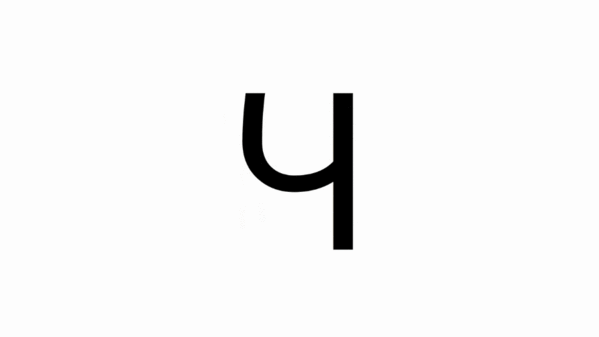Surveying the vastness of Unicode, artist Daniel Temkin identifies a standard whose re-appropriation has skewed the boundaries of web typography and found more unsettling forms of expression. Jörg Piringer's video piece Unicode (2011), an excerpt of which is shown above, gives a sense of the seemingly inexhaustible possibilities and variations of letters Unicode makes available to us. Breezing through the Basic Multilingual Plane (the first 65,536 characters), one letter per frame, takes us back and forth across continents, through alphabets used by hundreds of languages over thousands of years. Most "Unicode" languages – such as Microsoft's Arial Unicode MS – support only this plane (and with many missing sections), allowing use of, say, Arabic, Thaana, all the domino symbols, a host of Indic languages, but not Linear B, Cuneiform, or the majority of East Asian characters.
Unicode is a specification, created and refined by a consortium led by Mark Davis of Google, that assigns a unique number to each letter.* It holds no symbols or fonts of its own. It ensures that an email you write in Lepcha will not show up as that weird string of e's adorned with random umlauts and diereses when viewed on the recipient's machine set to American English. It allows us to communicate in all the languages of the Earth.
After the initial amazement of the vastness of this system, bored Internet people found other uses for it, for instance as a way to work around design limitations of the Web. The most familiar example is that of "crazed text," popularised by the Zalgo meme. Zalgo is a Lovecraftian demon who livens up altered Garfield and Family Circus cartoons with tentacles and existential terror. His catchphrase, "He Lives" (the last thing Sluggo says as his eyes turn black and Nancy devours his face), came to be represented so that the letters themselves seem to shimmer, or bleed apostrophes. It did this with a feature of Unicode used to create composite characters or add diacritical marks – only here, many are added to one letter, or are added to other diacritics, until they band into long chains of amputated letterstrokes, flowing into neighbouring lines of text. Soon, artists began using this technique to break out of the contained, corporate boxes of Facebook and other social media, creating thickets of letters that covered ads and other posts.
This technique relies on a deliberate misuse of fonts that, for native users of the Roman alphabet, appears as a mangling or evolution of that specific alphabet. The Unified Canadian Syllabics script – an enormous letterset used to write in a conglomeration of First Nations languages – gives us letters that, for historical reasons, are similar to, yet distinct from the Roman alphabet. We're given the letter P slightly strangled – or something halfway between a D and U, or a Q and a P, sitting at the very edge of what we recognise as one symbol or another, like from a Tauba Auerbach alphabet. Letters from this set and others are used in deliberately ambiguous text messages and fictional languages – or simply to create new emoticons like a shrugging panda bear.
In 2011, I began my own Unicode experiment, a hot-or-not contest for letters from across the Basic Multilingual plane. Unichar.com presents two letters side-by-side and asks for the user to select one: a ridiculous choice, but the more selections one makes, the more a personal aesthetic evolves. These coalesce into a surprisingly cohesive collective aesthetic. When the infamous Unicode Snowman didn't appear on the most selected list, some cried foul. But the actual choices are far more interesting: no one language clearly dominated, yet nearly every letter selected had similar characteristics. We are apparently drawn to swirly, asymmetric letters, anything that works against the grid of lines of text in rectangular textboxes on a rectangular screen. At the time of writing, it includes characters like ɚ, ௵, ᖘ and ತ. If we could collectively build our own alphabet from the ground up, perhaps this is what it would look like.
* This is not so simple – there are many compatibility and political issues, which influence the order of languages and have made several alternate character encodings necessary
Daniel Temkin
…makes images, programming languages, and interactive pieces exploring our inherently broken patterns of thought and the clash between human thinking and algorithmic logic. His work has been a critic's pick for ArtNews, the New York Times and the Boston Globe. He has discussed his work on PBS and at conferences such as Media Art History and GLI.TC/H, and in such journals as Media-N, NOOart, and World Picture Journal.
October 22, 2014 3 minutes read
Twisted Glyphs
Surveying the vastness of Unicode, artist Daniel Temkin identifies a standard whose re-appropriation has skewed the boundaries of web typography and found more unsettling forms of expression.

